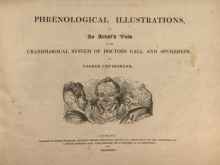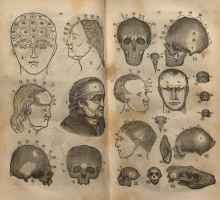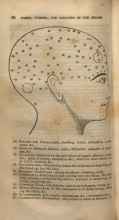Bless Me, What a Bump!
A man sits while a woman examines his head. The right side of the image shows a mapped skull placed on a table. This image satirically portrays a phrenological reading. Considering that may caricatures of phrenology are set in a consultation room or lecture hall, the lack of specific context may suggest a private setting.








